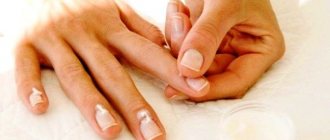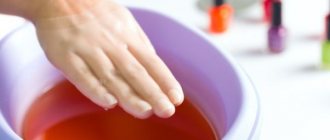Homemade cheese is a delicious delicacy, in which there is definitely nothing superfluous. This is much better than a store-bought product. Recipes for soft cheese at home are varied. It is made with both cow's and goat's milk, with herbs and various spices. Some people prefer fresh options, such as Adyghe. Others, on the contrary, are spicy with salty notes. And both of these options can be easily prepared at home, often the process itself does not take much time.
Delicious Adyghe cheese
Adygei is one of the favorite cheeses for many. It has a delicate and loose structure, with completely unnoticeable notes of salt. To make soft cheese you need to take the following ingredients:
- three liters of milk;
- liter of kefir;
- two teaspoons of salt.
How to make cheese? First, pour kefir into the pan. They heat it up. After about five minutes, the whey and curds will begin to separate. The liquid is poured into a separate container. It is left for two days at room temperature, it should sour.
Then the milk is heated. After boiling, add whey and stir. After about seven minutes, the cheese will begin to separate and appear on the surface. Remove it, squeeze it thoroughly through cheesecloth, add salt. Mix the cheese base and spices, wrap in cheesecloth and allow the liquid to drain.
Then they put gauze under the press. Transfer the container to the refrigerator. Periodically, liquid will be released that needs to be drained. According to this recipe, soft cheese at home is ready in just 24 hours.
By the way, cottage cheese, which is formed from kefir, can be eaten. It turns out tender. Often a little sugar is added to it and given to children.
Rules for serving cheese
You also need to know how to serve cheese. If you plan to serve cheese as a dessert or a delicious appetizer, you cannot do without a large, beautiful dish. It can be ceramic, porcelain and even wood or marble. The main thing is to do everything carefully, beautifully and according to the rules.
Hard cheese cut into pieces is usually placed along the edge of the dish, crumbly cheeses are in the middle, and soft cheeses are placed a little to the side. Make sure that sliced \u200b\u200bplates and pieces of cheese of one type do not come into contact with cheese of other varieties, so that the flavors do not mix. True, experts believe that the taste of cheese is revealed better if it is cut into cubes rather than into thin slices, as we are used to doing at home. But you won’t be able to cut aged hard cheese into slices or cubes: due to its structure and minimal amount of moisture, such cheese can only be chopped into pieces with a special knife or grated.
Along with the cheese plate, plates of grapes, apples, pears, raisins, figs and prunes are served. But, of course, you shouldn’t try to overwhelm your guests with the number of types of cheese. If you plan to use cheese as an accompaniment for an aperitif, you can get by with two or three types of cheese and crackers. As a dessert, the cheese plate can be more varied and consist of a wider selection of cheeses of varying textures and flavors. The cheese should be warmed to room temperature, so prepare the cheese plate ahead of time.
An excellent combination is obtained when both the cheese and the drinks that go with it are made by the same manufacturer. Thus, red and white DŽIUGAS® grape wines are best paired with Džiugas cheeses. And if the combination of tastes of cheese and wine is already familiar to you, then try the propolis tincture “Legendinis DŽIUGAS®” with a piece of Džiugas cheese. Notes of honey, poplar buds, wax and incense, combined with the taste of nuts and cream, guarantee an unforgettable dining experience. By the way, the Džiugas company also produces honey of the same name. And, as you know, hard aged cheese and honey are one of the classic flavor combinations.
Those who have not yet become a fine connoisseur of such an amazing delicacy as cheese have a lot of exciting things to do. Choose, taste the cheese with your friends, and you will definitely fall in love with this wonderful product.
Goat's milk cheese
Cheese making at home does not stand still. Nowadays various varieties of this product are prepared. For example, you can use goat’s milk rather than the usual cow’s milk. For this recipe you need to take:
First, heat the milk. It should reach a temperature of about 90 degrees. Squeeze the juice from the lemon. It must be fresh, so the canned version will not work. Add the juice into the milk in a thin stream and stir. After a few minutes, a cheese mass will begin to form. The whey itself can later be used as a base for pancakes.
The cheese is placed on cheesecloth to drain the moisture. Then mix it with salt or other spices. Form a lump in gauze and hang it so that the moisture drains. After about an hour, you can remove the cheese, cut it into pieces and serve.
Instructions Homemade soft cheese Article: 4444
Instructions for learning cheese making at home.
History of creation
It is impossible to say exactly where and when cheese appeared. It was most likely discovered by observing milk curdling when warm. Many believe that the birthplace of cheese is the Middle East: the Bedouins used leather bags made from sheep's stomachs to transport milk, and shaking, heat and enzymes turned it into cheese.
About the recipe and starters Homemade soft cheese is compressed cottage cheese fermented using a milk-clotting enzyme.
Characteristics of the finished product Cheese with a smooth, even surface without a rind, with traces of serpyanka. The taste and smell are clean, fermented milk. The dough is tender, moderately dense, slightly brittle, but not crumbly. The pattern consists of round, oval or angular eyes Color from white to light yellow
Materials and tools An enamel saucepan or a stainless bucket A bowl of water (water bath) for slowly heating the milk A plastic ladle, a slotted spoon Thermometer (for example: art. 31 on our website) A colander A long knife Gauze or sickle
Raw materials and consumption rates Milk: whole, ripened milk that has not undergone separation or heat treatment. To get 1.5 kg of soft cheese you will need about 10 liters of cow's milk.
Set contents: Art. 1815 – starter for soft cheeses (Lactococcus lactis, Lactococcus cremoris, Str. Thermophilus), sample bottle for 10 liters of milk Art. 76 – enzyme for milk coagulation Pepsin-renin Meito Art. 1560 – calcium chloride, bag 2g (for adding to milk) Art. 1838 – measuring spoon, 0.2 ml (for dosing the enzyme)
Operating procedure
Preparing milk. To make soft cheese, use whole farm cow's milk. We recommend pasteurization: quickly heat the milk to a temperature of +73 °C, with vigorous stirring, wait for 30 seconds. Quickly cool in a water bath to a temperature of +32 °C ... +34 °C. Add the starter for soft cheeses from the kit into the cooled milk. Scatter the culture over the surface of the milk, leave for a while, then thoroughly mix the starter with the milk, preventing the milk from foaming.
A mandatory process is adding calcium! Art. 1560 (calcium chloride) dissolve in 50 ml of boiled drinking water at room temperature (at the rate of 2 g per 10 liters of milk) and add to the milk. Mix thoroughly.
Addition of milk-clotting enzyme. Important! The dose of milk-clotting enzyme may differ several times depending on the properties of the milk. We recommend that you always carry out a clotting test and calculate the dose of the enzyme individually for each specific case. You can find out more about this in Appendix 1. Pepsin-renin Meito is added at the rate of 0.04 - 0.14 g per 10 liters of milk (1 - 2 level measuring spoons). First dissolve the enzyme in a tablespoon of boiled drinking water at room temperature. Add the enzyme solution to the milk and mix thoroughly*. *stirring is carried out intensively, without creating flows circulating in a circle, evenly throughout the entire volume, for 5-7 seconds. Stop the flow of milk. In moving milk streams, the curd does not form correctly.
Checking the formation of a curd and its processing Milk begins to curdle after 12-15 minutes, but for the curd to gain density and the desired acidity, it can take from 40 to 70 minutes. You can find out more about this on the website zdoroveevo.rf Do not forget to maintain the temperature of the milk mixture around +32°C ... +34°C. Monitor the temperature with a thermometer. Clean separation of the curd from the whey must be achieved. There are many verification methods. For example, you can place a slotted spoon on the surface of the clot - if rolled correctly, transparent whey will pass through its holes, and the clot will elastically bend a few millimeters under the influence of the weight of the slotted spoon. If this has not happened yet, leave the clot for a while longer. Cut the clot vertically with a knife or lyre, and then horizontally into pieces with a side of 15 - 20 mm. The softer the cheese you want, the larger the pieces. Leave for 5 - 15 minutes so that the cut curd thickens a little, settles, and the whey separates. Staging and second heating are not carried out. Knead the grain for 10-20 minutes, then place it (using a slotted spoon or ladle) in a colander lined with gauze.
To taste, you can add fresh herbs, nuts or spices to the cheese.
Leave to separate the whey (you can hang it directly in gauze) for 4-5 hours at a room temperature of 15-16 °C. At this time, the cheese acquires its characteristic taste and aroma. As soon as the whey stops separating, the cheese is ready.
Before eating, homemade cheese can be salted to taste.
You can store the finished cheese in the refrigerator for no more than 3 days.
Try making other cheeses with our sets: Brynza, Homemade goat cheese, Gouda, Camembert, Cachotta, Maasdam, Roquefort, Russian, Suluguni, Mozzarella, Tilsiter, Feta, Cheddar, Chechil, Edam, Emmental.
Interesting seasonings for cheese
The recipe for soft cheese at home can be considered basic. But many people like more tart snacks. For example, you can take the following ingredients:
The garlic is peeled and passed through a press. Together with the rest of the spices, they are mixed with the whey after its first decanting. Then they form a ball and hang it in gauze for an hour.
Soft cheeses
All other types of soft cheeses - mascarpone, tofu, Philadelphia - should either be used in dishes (for example, or added to rolls), or spread on a fresh baguette. Why not?
Also watch the video where a real French (and very attractive) man shows by his own example how to properly eat cheese with a baguette. Separately, we place the baguette, break off a piece (do not cut it with a knife) and put the cheese on the bread. We do not require any additional plates or cutlery.
Voila. Now you are the main cheese gourmet in your company, who can safely tell the waiter that the cheese plate was served incorrectly.
Camembert cheese is an exquisite dish that can decorate any table. This product is enjoyed in its natural form, and also becomes an ingredient for sandwiches, salads, pies and other dishes.
Salty soft cheese
This homemade soft cheese recipe creates a salty snack with a bright, creamy flavor. To prepare this delicious option you need to take:
How to make cheese? Milk is poured into a saucepan, salt is added and brought to a boil. Separately beat all the eggs with sour cream. Add the mixture into the milk in a thin stream and stir. After the milk boils again, the cheese mass will begin to separate. It is boiled for another five minutes, then decanted onto gauze. Allow the liquid to drain, and then put it under pressure in the refrigerator. This cheese goes well with coffee.
How to cook at home?
Camembert cheese is relatively easy to prepare at home. From the dishes you will need to prepare a large saucepan with a volume exceeding four liters. You should not give preference to enameled or aluminum containers. Then you will need molds - cylinders with holes that allow you to express the whey. The absence of a bottom in this case is even considered a plus. There must also be holes in the lids. Of course, a thermometer will come in handy, but we shouldn’t forget about a plastic box suitable for storage in the refrigerator.
It is better to take pasteurized milk, in the amount of three liters, and mesophilic starter, in the amount of 75 milliliters. In addition, you will need calcium chloride in the form of one ampoule of a ten percent aqueous solution, an enzyme capable of curdling milk in an amount of 0.1 grams, and a couple of pinches of dried mold cultures. It is also worth preparing two-thirds of a tablespoon of salt.
After the specified period, Camembert will become like jelly.
It is cut into cubes with sides of one and a half millimeters and set aside for about eight minutes until all the whey is gone. Then the cubes are placed on the fire - the temperature is again 32 degrees, and everything is mixed for about twenty minutes. The whey is poured into a bowl, and the dense part is compacted into molds, after which you have to wait a couple of hours and turn the cheese over.
Over the next four hours, the Camembert should be turned over every half hour. Finally, everything is laid out in a plastic container lined with paper towels. The paper will need to be changed when it gets wet, and the head will need to be turned over daily. After two weeks, mold will grow on Camembert. This will be a sign that the product can be wrapped in foil and put in the refrigerator for a month until fully ripe.
You can learn a lot of interesting information about this cheese from the video below.
There are a lot of options for combining cheese and a variety of food products.
Especially if you take into account regional serving traditions, because different cheeses are always present in the cuisines of all peoples of the world.
Cheese can have a very bright rich taste or, conversely, it can be a little bland, so you need to know what you can combine it with in order not to spoil the taste.
And with the right combination of products, they are easily absorbed by the body without forming fat deposits.
1. Cheese and wine
This is a classic combination. But it is important to choose the right wine for the right cheese.
The general rule is: the more intense the flavor of the cheese, the brighter the wine should be; For soft-tasting cheeses, more delicate wines are suitable.
So, you can serve light white or rose wine with mozzarella, and fortified, dessert or rich red wines with blue cheese.
2. Cheese and honey
The best combination is soft French brie or camembert cheese with white mold in the crust and light, viscous honey, especially chestnut honey.
These cheeses also go well with berry jams and dried fruits.
3. Goat cheese and beets
An ideal combination that has not yet broken the mentality of the Russian people, for whom this red vegetable has always been too rustic.
Meanwhile, baked beets with pesto sauce, beet carpaccio with goat cheese, and a simple salad made from these two products are real restaurant dishes.
You can supplement any of them with walnuts.
4. Blue cheese and pear
Sweet soft juicy pear and salty cheese are an excellent tandem not only in canapés, but also in salads, desserts or hot dishes.
In general, pear goes well with any cheese, but the combination with Dor Blue cheese can become a favorite for many.
The combination of figs instead of pears with cheese is also interesting.
5. Cheese and grapes
Yellow and white cheese and red and purple grapes look not only beautiful, but also appetizing.
The firm saltiness of the cheese and the explosive sweetness of the grapes are a stunning combination of flavors and textures.
An excellent snack or dessert, the main thing is that the grapes are seedless.
6. Cheese and vegetables
An ideal combination from both a gastronomic and nutritional point of view.
Rich in protein and fat, the cheese works well when paired with low-calorie tomatoes, cucumbers, herbs and green salad.
From a taste standpoint, the saltiness of the cheese gives the fresh salad just the right angle.
Among hot dishes, I remember combinations of cheese and cauliflower, blue cheese and pumpkin, and processed cheese with corn porridge.
7. Cheese and mustard
Cheese, of course, is not eaten simply with mustard, but in the composition of dishes these products fit together perfectly.
Anything is suitable as a main product: fish, tomatoes, eggs, meat, pancakes...
With mustard and cheese, the dish will never turn out banal.
8. Cheese and coffee
A classic example of this combination is tiramisu.
In general, cheese is either simply served with coffee, or a piece is dropped to the bottom of the cup, and coffee is poured on top.
The pairing rules are simple: go with rich cheeses for black coffee, and softer cheeses for light cappuccino.
But in general, lovers themselves select the combination to their taste.
Cheese and coffee are a gourmet combination.
For them, a coffee-flavored cheese was even produced in Britain. It was called "Cappuccino".
9. Cheese and berries
These two products go especially well together in desserts.
Cheesecakes, puff pastry baskets with cheese and berries, canapes, butter cream with mascarpone and persimmon, just cheese baked with berries...
Contrary to popular belief, not only neutral cheeses like mascarpone are suitable for desserts, but also varieties of cheeses with more distinct flavors.
10. Cheese and fish
The combination of cheese and fish is widely used in rolls.
But it is good not only in Japanese dishes.
Pancakes with cheese and salmon, cheese roll with salmon, baked fish with cheese, cheese and salmon canapes, salad with fish and cheese - simple and tasty restaurant-quality dishes.
RULES FOR EATING CHEESE….
When an inexperienced person sees a rich plate of cheese, he does not know how to approach it, what knife to use to cut off different varieties and how to eat them competently. It's really simple! If you know the basic rules of etiquette, you can not only enjoy elite cheeses beautifully, but also easily organize a home cheese tasting.
Restaurant rules
Learning how to properly taste cheeses in a restaurant is very simple. When a waiter approaches you with an extensive selection on a tray, tell him which varieties you want to try. He will separate small pieces and transfer them to your dish. If the cheese plate is already served on the table, you can transfer the product you like to your own bowl or ask the waiter to do this. The main thing is not to try to choose the most attractive and tasty part. The fact is that many cheeses have a rind and a core that differ in color and taste, so it is impolite to take one for yourself. By the way, pick up a piece from a common plate not with your fork, but with a special utensil that usually lies nearby. This can be a special fork or a cheese knife with two teeth at the end and through cavities evenly spaced on the blade (air “pockets” are formed in them during cutting, so the soft cheese does not wrinkle and easily lags behind the knife). If there are several devices (each intended for a specific variety), do not mix them up so that the cheese flavors do not mix.
Don't grab with your hands!
You cannot pick up cheese with your hands, eat it from a shared knife, hook it with a dessert spoon, or do other stupid things. According to the rules of etiquette, the delicacy requires a fork and knife. In extreme cases, it is not forbidden to use only a fork. The only exceptions are chechil (its unraveled braids are eaten with your hands) and processed cheeses - they are spread with a butter knife on a bun that lies on a bread plate.
Cheese plate
If you decide to serve a cheese plate at home, try to put it together wisely. Firstly, for the dish you need to choose several varieties that are dissimilar in taste. Secondly, the texture and color of the delicacies should be different. Thirdly, try not to repeat the shapes of the cheeses on the plate: let them be small pyramids, slices, slices, triangles, and so on.
The layout of the pieces also matters. They should be placed on a large round dish, wooden or marble board in a clockwise direction so that guests can start with the lightest and end with the most piquant. Let the first be mozzarella or Adyghe, then neutral reblochon, delicate camembert or brie, followed by sharper gruyere, sheep pecorino, and complete the composition with the most tart one - Roquefort or deliciously smelling livaro. If you want to serve fruit and bread with the cheeses, place them on other plates so that they do not distract attention from the main treat.
Delicate curd cheese
The recipe for soft curd cheese is also simple. It may well replace purchased options. For this dish you need to take:
First, thoroughly beat the cottage cheese using a blender. The cucumber is cut into circles and also placed in a blender bowl. The skin is left on. Add washed and dried sprigs of greenery. Mix all the ingredients until the mixture is homogeneous. Then add the butter, previously removed from the refrigerator, so that it becomes soft. Mix the ingredients. Add salt to taste.
The result is a cheese that is tender and bright in taste. It's great for light sandwiches.
Homemade ricotta
Ricotta is a cheese that has become popular. It is used not only in its pure form, but also as part of ready-made dishes. The soft cream cheese recipe is quite simple. It is suitable not only for sandwiches, but also as a base for casseroles or other, more complex desserts. To prepare this homemade version you need to take the following ingredients:
The milk is slightly heated until slightly warm. Take out the sour cream and cream in advance so that they come to room temperature. Then combine everything in a saucepan and mix. Cover the container with a lid and leave in a warm place for at least six hours. They look at the results. The mass should begin to ferment and sour, curdle.
Then heat everything on the stove. You cannot stir or boil the cheese base! The heated mass is covered again with a lid and left for another twelve hours. Afterwards, lay gauze on a colander, preferably in two or four layers. Strain.
Afterwards the cream cheese mixture is suspended for six hours. The finished product is shiny and smooth. It has a delicate creamy aroma.
By the way, the whey from such cheese turns out to be viscous. It makes excellent pancakes and yeast dough.
Soft cheese with dried dill
This recipe for homemade soft cheese from milk produces a very interesting-tasting product. Due to dill, it has not only a persistent aroma, but also a piquant taste.
For this cooking option you need to take:
To begin, milk is poured into a saucepan. Bring to a boil. Add dill, salt and oil to it. Add vinegar. Then stir. After boiling again, the whey will begin to separate. After this, cook for about a minute.
What is the cooking time for soft cheese? Just put it in a colander to drain off excess moisture. Then they put the cheese under pressure. You can eat it in just fifty minutes, cutting it into pieces. It is very soft and gentle. Due to its spicy taste, it is perfect as an appetizer with wine. By the way, other types of dried herbs are also great. For example, basil, oregano or marjoram.
Marbled version of cheese
What's good about this recipe? This cheese, despite being soft with a slight sponginess, slices beautifully. Such slices will be an excellent decoration for sliced cheeses or sausages. Also, what’s nice is that the cheese gets this color thanks to natural products, without any dyes.
To prepare this version of cheese you need to take:
Also, when making cheese, you need to take into account personal preferences. So, you can add a little pepper for spiciness.
The process of making cheese with carrots
Peel the carrots and grate them on a fine grater. Place cottage cheese in a saucepan and pour milk over it. Stir and then add carrots. After the mixture boils, keep it for another seven minutes.
Strain the ingredients through several layers of gauze to drain the moisture. Then add eggs, sour cream, garlic juice, soda and salt to the cheese. Mix everything and then cook for another five minutes. When the cheese begins to pull away from the walls in a uniform lump, it is ready. Place the product in a deep plate. Once the cheese has cooled completely, you can eat it.
How to eat cheese correctly
Today, cheese fans can enjoy an abundance of completely different types of this dairy product. But do we know how cheese affects the human body and whether eating it is beneficial?
Useful product
When consumed in moderation, cheeses are very healthy: they are a complete protein product that contains a set of amino acids that are very important for humans. All types of cheese contain large quantities of phosphorus and calcium, necessary for teeth and the skeletal system, as well as a lot of vitamins: A, B1, B2, B6, B12, D and PP. In addition, some soft cheeses contain enzymes that suppress pathogenic flora in the intestines and restore its protective layer, which helps the intestines work better. Cheese is indispensable for people who experience severe mental and physical stress, as well as for pregnant and nursing mothers.
Cheese contains the amino acid tryptophan in large quantities, which is responsible for the production of the joy hormone. Tryptophan is a natural antidepressant, promotes good sleep, relieves nervous tension, reduces irritability, improves mood, enhances performance and concentration, and also helps avoid migraines and headaches. In addition, this amino acid promotes the production of growth hormone, recovery from eating disorders (anorexia, bulimia) and reducing the effects of nicotine and alcohol poisoning. Tryptophan will also please those losing weight, because it normalizes appetite, reducing the feeling of hunger and reducing cravings for carbohydrate foods.
But you shouldn’t get too carried away with cheese, because if tryptophan enters the body excessively, the effect can be completely opposite: you can expect migraines, sleep disorders, and nightmares.
We eat and do no harm
Cheese, like any food product, can be harmful to the body if consumed in excess. This is a very nutritious product that contains a large amount of fat - from 20 to 60 percent of the dry matter, so it certainly cannot be classified as dietary. The calorie content of cheese varies from 225 to 445 kcal per 100 g, and this is comparable to the calorie content of a whole bar of chocolate!
“I would advise a healthy person to adhere to the following norms: eat two pieces of any semi-hard cheese per day (about 50 g) or 40 g of grated cheese in the first half of the day. Soft cheeses are lower in calories and can be eaten even in the afternoon, but not more than 100 g,” says nutritionist Ekaterina Pavlova.
For people who are obese or tend to be overweight, it is advisable to limit their consumption of cheese or avoid it altogether. For those who are on a diet but cannot live without cheese, nutritionists recommend making a light salad with feta, mozzarella, feta cheese or Adyghe cheese for dinner. They will be an excellent source of fiber, vitamins and complete protein, while fatty tissue will help break down the calcium contained in the cheese.
But with low-carb diets, cheese is simply necessary, experts say. Such diets are enriched with protein, which, in turn, causes a deficiency of amino acids, vitamins and minerals necessary for their processing. These same elements are needed for the functioning of the brain and for the general normal state. And cheese, which contains both fat and microelements, in this case saves the situation.
Useful, but not for everyone
People with the following diagnoses will have to refrain from eating the product: – lactase deficiency (milk protein intolerance); – acute inflammatory diseases of the gastrointestinal tract (colitis, gastritis, pancreatitis, cholecystitis); - urolithiasis disease; – pyelonephritis; – gout; - hypertonic disease.
In addition, cheese is a high-protein product that can cause allergies. Most often, an allergic reaction occurs to rennet cheeses (for their preparation, the rennet enzyme rennin is used, also known as chymosin - a digestive enzyme of animal origin, which is isolated from the stomachs of calves after slaughter).
How can cheese be dangerous?
Processed cheese
In their production, vegetable fats are often used instead of dairy fats, and they provoke the deposition of cholesterol on the walls of blood vessels and reduce immunity.
With mold
On the one hand, it helps to absorb calcium, and mold cheese (in moderation!) improves the production of melanin, which protects the skin from exposure to sunlight. On the other hand, the fungus Penicillinum, which is found in mold, produces an antibiotic that destroys beneficial bacteria in the intestines. However, this danger is considered exaggerated: the body can resist a huge range of modern antibiotics in large doses.
However, some people should still avoid blue cheese. First, for pregnant women: some types of cheese contain bacteria that can cause serious illness to the fetus and even miscarriage. Secondly, it should not be used by people with fungal nail diseases, dysbiosis or thrush. And it is better not to give cheese to small children, the elderly and people weakened after serious illnesses.
Evgenia Sinyak, “Today”









